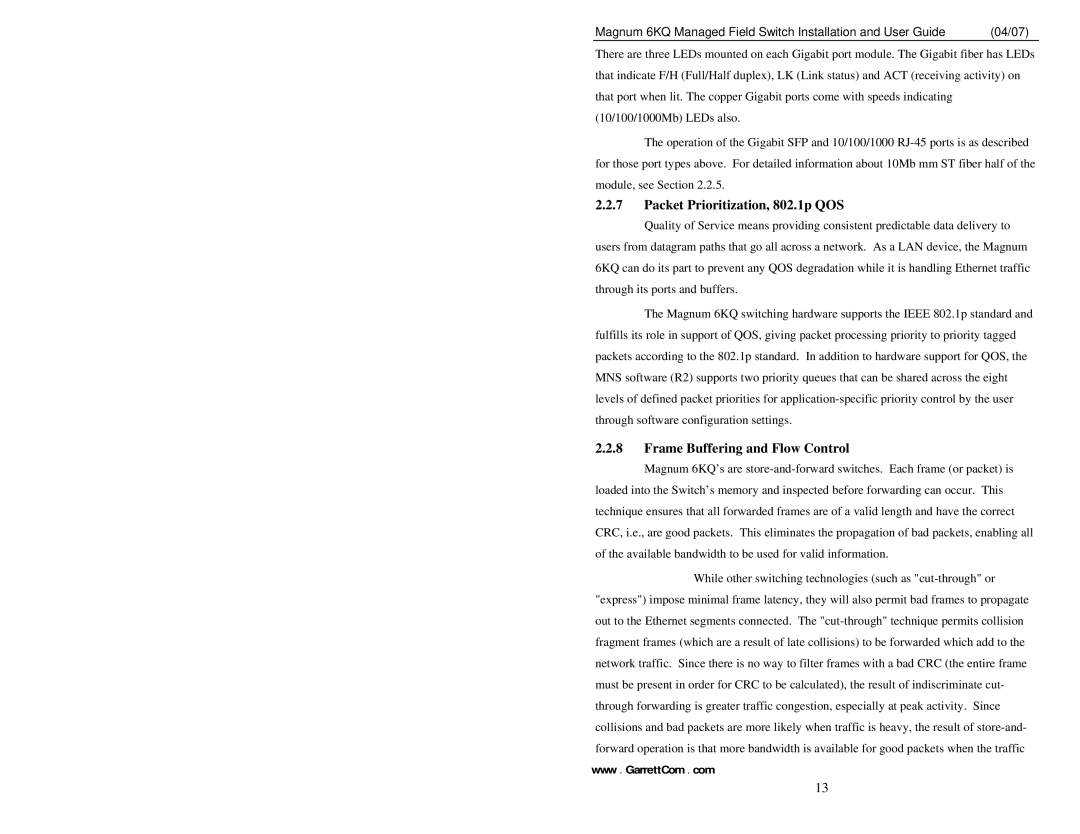Magnum 6KQ Managed Field Switch Installation and User Guide | (04/07) |
There are three LEDs mounted on each Gigabit port module. The Gigabit fiber has LEDs that indicate F/H (Full/Half duplex), LK (Link status) and ACT (receiving activity) on that port when lit. The copper Gigabit ports come with speeds indicating (10/100/1000Mb) LEDs also.
The operation of the Gigabit SFP and 10/100/1000
2.2.7Packet Prioritization, 802.1p QOS
Quality of Service means providing consistent predictable data delivery to
users from datagram paths that go all across a network. As a LAN device, the Magnum 6KQ can do its part to prevent any QOS degradation while it is handling Ethernet traffic through its ports and buffers.
The Magnum 6KQ switching hardware supports the IEEE 802.1p standard and fulfills its role in support of QOS, giving packet processing priority to priority tagged packets according to the 802.1p standard. In addition to hardware support for QOS, the MNS software (R2) supports two priority queues that can be shared across the eight levels of defined packet priorities for
2.2.8Frame Buffering and Flow Control
Magnum 6KQ’s are
loaded into the Switch’s memory and inspected before forwarding can occur. This technique ensures that all forwarded frames are of a valid length and have the correct CRC, i.e., are good packets. This eliminates the propagation of bad packets, enabling all of the available bandwidth to be used for valid information.
While other switching technologies (such as
www . GarrettCom . com
13
